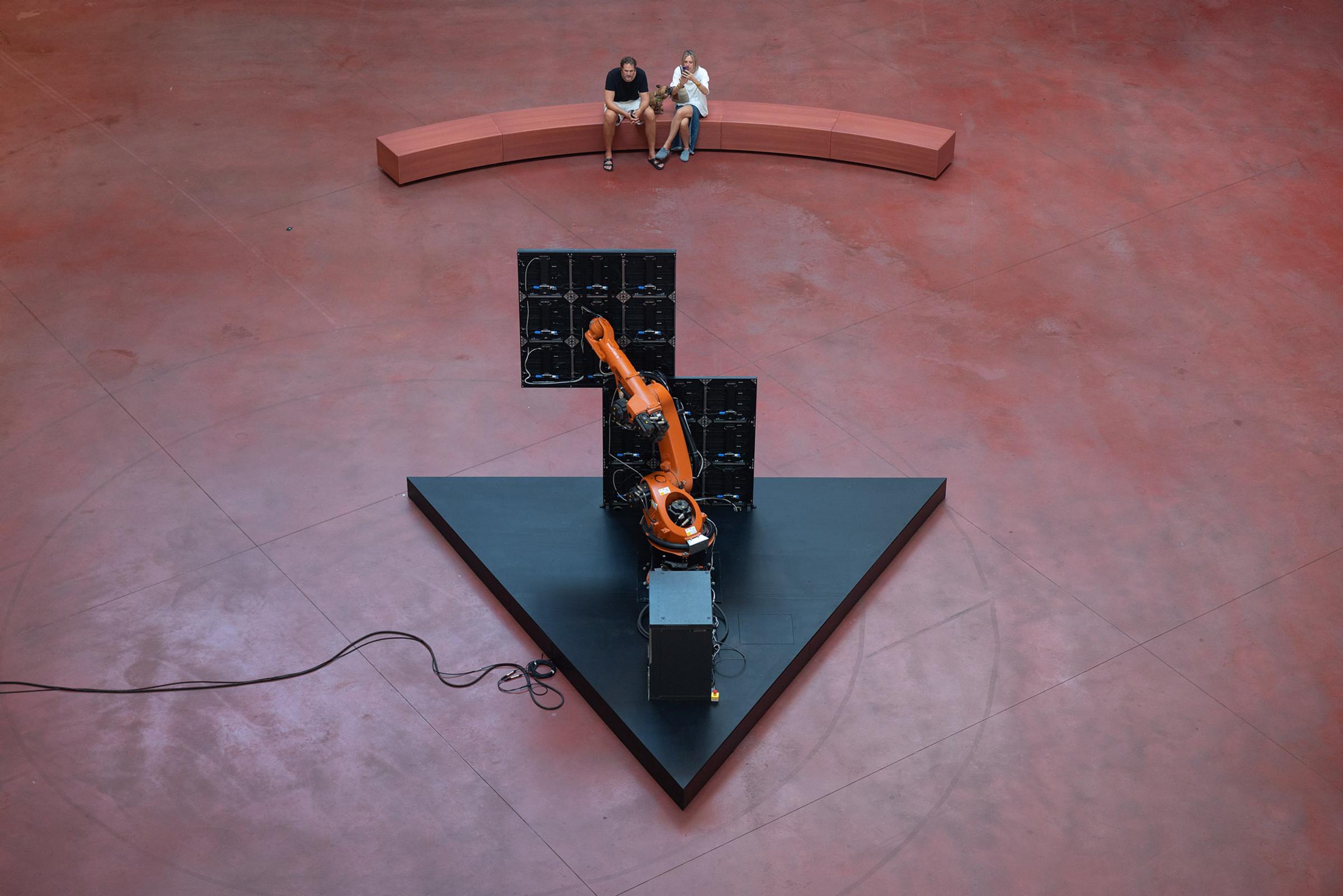
Entangled Installation
2024
generative art, installation
Kuka KR30-60, JavaScript, Python, KRL
As a continuation of the Entangled project, the Entangled Installation translates the cross-chain particle interactions into a large-scale kinetic sculpture at Wintercircus in Ghent, Belgium. Instead of executing pre-programmed industrial tasks, a robotic arm is subverted into a replacement of the human hand, reenacting gestures from the digital artwork at architectural scale.
The kinetic sculpture was specifically designed for the monumental space in which it was placed, with the robotic arm mounted at the center of a triangular base facing the main exhibition area. Engineered to provide unrestricted mobility, the installation allows the arm to move a large scale LED-panel around, behind and partially in front of a stationary panel mounted in front of the robot. While the front of the installation presented the primary visual experience, the work was designed to be encountered from multiple vantage points, with the rear view revealing the contrast between the raw machine aesthetics and intricate motion that orchestrates the synchronised movement.
Throughout the exhibition period, randomly selected pairs from the digital artwork was displayed on the screens, with content synchronised in real time using custom software that forwards positioning data directly from the robotic arm. Complementing the visual choreography, composer Trevor Doherty developed a custom ambient soundscape that responds to the installations behaviour in real time.
The installation was developed in close collaboration with Fxhash, Wintercircus and local robotics company ArcNC.
© Jack Belisle

A custom Grasshopper script was developed to simulate and program the Robot's motion paths using the Kuka PRC plugin
© Bjørn Staal
While the original work connects collectors across digital networks, its physical manifestation subverts industrial technology to bring audiences together in a shared space. The robot performs the intimate gestures that define the online experience, yet in doing so it draws people away from their screens and into collective presence. This paradox suggests both the limitations of online digital spaces and the unexpected ways that technology might restore, rather than replace, human connection, even as it highlights our growing dependence on technological intermediaries to facilitate meaningful encounters.
